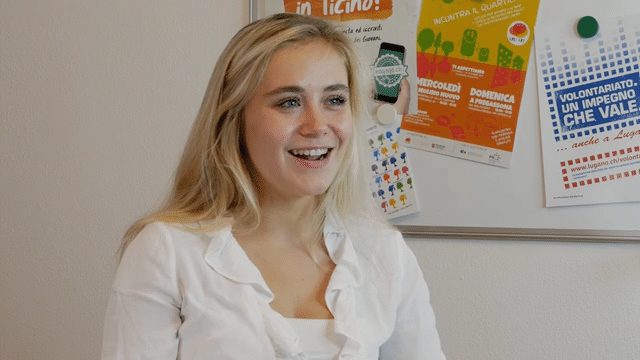I have often seen a documentary or corporate film that in the end left me with nothing, if you ask me which ones, I don’t know, I forgot them right away.
Works like these contain within them a fundamental error: they do not excite because they focus only on the technical aspect.
But how can one excite the viewer by narrating, for example, a seemingly mundane activity?
Many filmmakers devote too little time to the pre-production phase, the one where you do your research and look for the key points of the story you want to tell by talking to people and understanding the environment in which they move. So many people ask a few pre-packaged questions without creating a real dialogue with their interviewee, film a little bit of everything that happens beyond the interview and then spend the remaining 80 percent of the time trying to assemble it all in the editing phase giving it more or less meaning. In the best of cases, the result depends on being lucky enough to have found an interviewee good enough to pull out something interesting. Unfortunately, in most cases this is not the case because many people, in front of a camera, become awkward and unnatural, trying, in vain, to act. Instead, putting them at ease is a fundamental task of the filmmaker who should never limit himself only to the technical aspects but carefully take care of human relationships giving them more attention than everything else.
My experience with interviews comes from a long way back, I have been doing interviews for 30 years and I think over the years I have learned how to do them, or rather, how not to do them at all!
The only way to have a natural result is to create a dialogue between me and my interlocutor, not the classic question and answer but a real conversation with a willingness to hear, understand and ask something more. But to do it well you have to be prepared and know where to direct the conversation to touch on all the key points identified during the pre-production phase. Let’s say it is a mix of technique and empathy that is learned with experience.
The protagonist of the story is the main key, when possible (but not always is) you have to choose him or her after careful research by talking to all potential candidates finding the one with the highest “score” in these three areas: desire, uniqueness and complexity.
It is not so much a question of whether these qualities are present but how strong they are, and my job as a storyteller is to draw these characteristics out of a person.
But maybe it’s a case of going deeper for each voice because it’s important.
Uniqueness is what makes the character different from anyone else. As human beings, our brains are wired to pay attention to novelty. This means that the more different, unique the character is, the more you can draw viewers into your story.
Desire is what the character wants more than anything else. The more passionate and driven the character is to achieve his goal, the more the audience will root for him. It is through the character’s desire that we create the emotional propensity for empathy. Desire makes the audience fall in love with our character.
Complexity is why the character wants what he wants. Complexity gives the character depth and/or integrity. It sustains the audience’s connection with the character. It gives the audience a reason to believe in him, to root for him to achieve his desire.
Overall, uniqueness, desire, and complexity work together to draw the audience in, make them fall in love, and sustain their connection with the main character. And it is the main character who will serve as the vehicle to lead the viewers to the ultimate purpose of the story being told.
But the character alone is not enough, you have to identify a story in which to move him, his story of course but it must not be a biography, otherwise we will definitely lose the audience’s attention because we will become boring. Always at the pre-production stage you have to identify the key points and how to arrange these elements at the beginning, middle and end of the film. Key points are the critical moments in a character’s story, those that have shaped his or her journey, some are specific, related to moments or events, others are generic by including cultural influences, social pressures by placing the character in a historical and/or environmental context.
Once the key points have been decided, they need to be distributed throughout the story, which must have a solid structure that in its uniqueness still respects what is commonly called the narrative arc.
Generally each story is divided into three parts, a 25% is the beginning where you show what you are talking about and the direction, 50% is the middle part, the journey part, the key points of the character’s life/activities and the remaining 25% is the end, the resolution, the emotional part where you let the viewer draw his own conclusions.
The key to the story to keep the audience’s attention is in the growth of emotion until the final part having clear, before starting filming that you have identified these four points:
- Found the main character and any secondary and/or expert characters, this creates connection.
- Identified the purpose of the film because this creates clarity.
- Placed key points in their best position within the story to create engagement.
- Established the places, areas or cities and time (seasons, subdivision of the day) where the story takes place because they create authenticity.
So paradoxically to have an outcome that is striking, thought-provoking and creates a connection, one must proceed in a very analytical and structured way. Once all needs and intentions have been established in a pre-production phase that should generally take 50 percent of a project, we move on to the shooting phase, which ideally should be only 20 percent of the time, which at this point will be focused and not random following a storyboard (a list of points and images to be covered/recovered) planned with one or more interviews/dialogues that go to the identified points and footage that shows the environment or depicts certain situations. Finally, the remaining 30 percent of the time will be devoted to editing, which will be facilitated by the fact that you already have a well-defined storyboard, where you can also insert music, graphics and titles to have a final result complete with everything.
In my personal history I have always loved to tell stories, it is what involves me the most and that is why I decided to dedicate my activity in making films that tell about people or activities that however are led by people who have enthusiasm and are able to transmit it to the viewers. It’s not an easy task but I always do it with great passion trying to combine technique and emotions together which then is how I am in my everyday life as well, maybe that’s why it comes so naturally to me.
If you are interested in a film about you and/or your business, please contact me and we can talk about it together.








